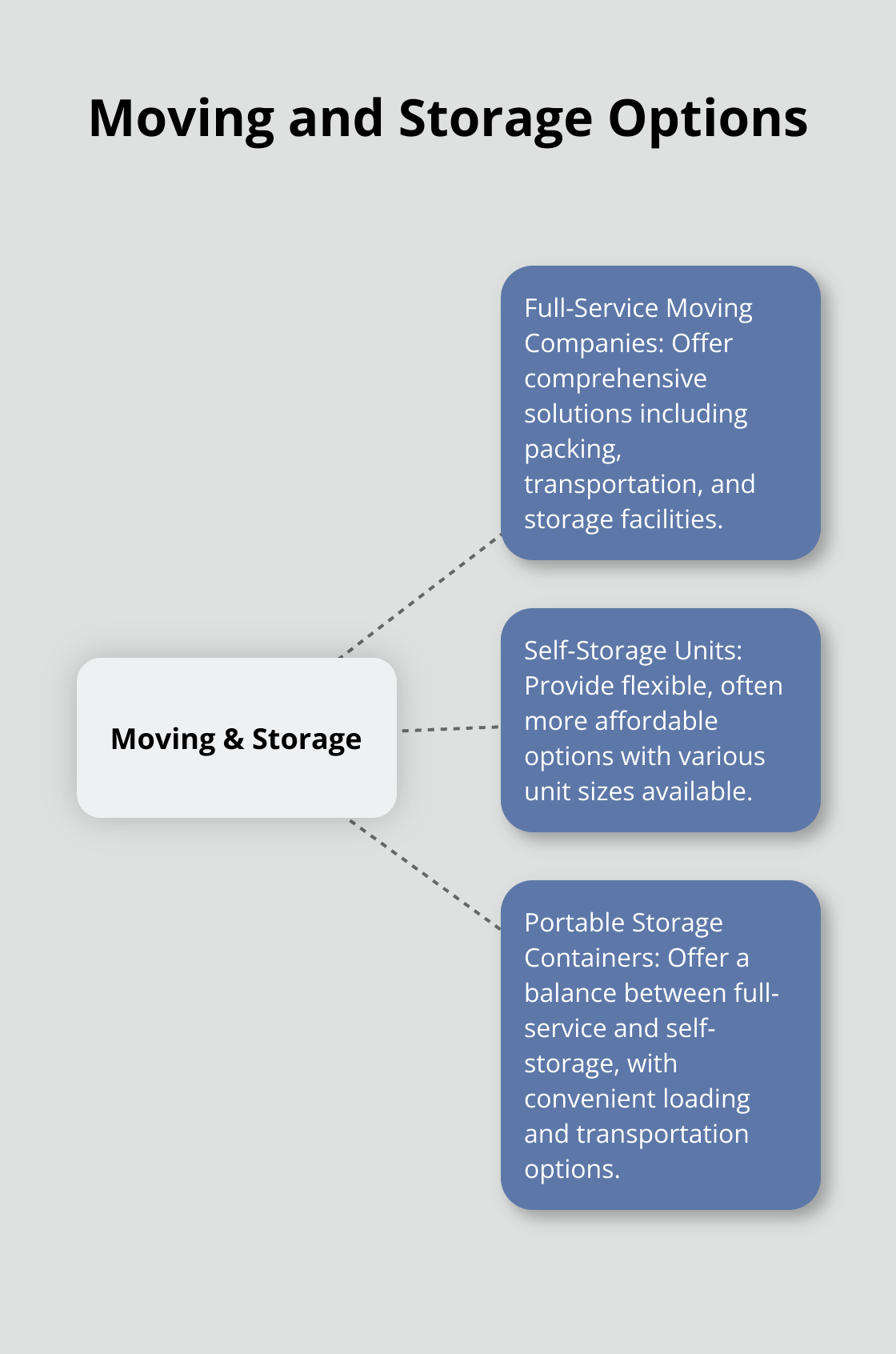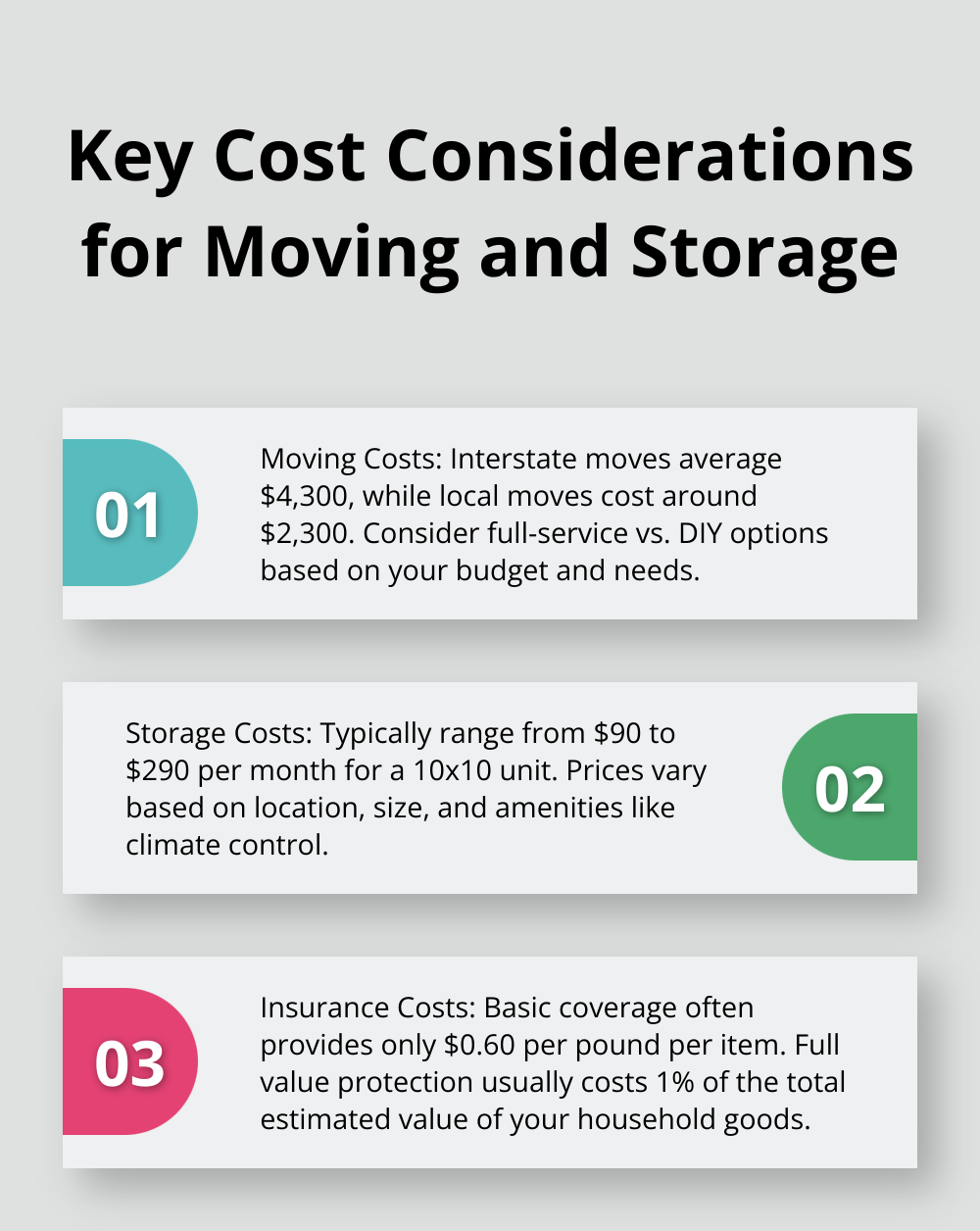Moving and short-term storage can be a challenging combination to navigate. At Southbay Moving Systems, we understand the complexities of coordinating these services seamlessly.
This guide will walk you through the process of finding the right solutions for your unique situation. We’ll cover everything from assessing your needs to evaluating costs and services, helping you make informed decisions for a smooth transition.
What Are Your Moving and Storage Needs?
Sizing Up Your Move
The first step in planning a move with short-term storage is to accurately assess your requirements. Take inventory of everything you plan to move and potentially store. Go room by room, list furniture, appliances, and boxed items. Don’t overlook things in your garage, attic, or outdoor spaces. This inventory will help you estimate the size of the moving truck and storage unit you’ll need.
For reference, a 10×10 storage unit typically fits the contents of a one-bedroom apartment, while a 10×20 unit can accommodate a three-bedroom house. (However, these are just guidelines. Your specific needs may vary based on how densely you pack and the nature of your belongings.)
Estimating Storage Duration
Consider how long you’ll need storage. This can depend on various factors:
- Home sale timing: If you sell your current home but haven’t secured a new one yet, you might need storage for a few weeks to a few months.
- Renovations: If you renovate your new home before moving in, factor in the project timeline.
- Job relocation: Sometimes, job relocations require temporary housing before finding a permanent home, necessitating longer-term storage.
According to the Self Storage Association, the average length of stay in a self-storage unit is about 20 months. However, for moves, it’s often shorter. Many customers need storage for 1-3 months during a move.

Special Considerations for Valuable Items
Some belongings require extra care during both moving and storage. These might include:
- Antiques and heirlooms
- Artwork
- Electronics
- Musical instruments
- Important documents
For these items, consider climate-controlled storage options. Climate control maintains a consistent temperature and humidity level, protecting sensitive items from extreme conditions.
Additionally, high-value items may require additional insurance coverage. While most moving companies offer basic coverage, it’s worth considering supplemental insurance for peace of mind.
Choosing the Right Moving and Storage Solution
After you assess these aspects of your move, you’ll be better prepared to choose the right moving and storage solutions for your needs. Professional movers can provide personalized advice based on your specific situation, ensuring a smooth transition to your new home.
Now that you’ve identified your needs, let’s explore the various moving and storage options available to meet them.
What Are Your Moving and Storage Options?
Full-Service Moving Companies with Storage
Full-service moving companies that offer storage facilities provide a convenient one-stop solution. These companies handle everything from packing and loading to transportation and storage. The main advantage of this option is convenience. You don’t have to coordinate between different service providers, which can save time and reduce stress. (However, this option can be more expensive than others.)
When considering a full-service option, ask about their storage facilities. Are they climate-controlled? What security measures are in place? How accessible will your items be if you need them?
Self-Storage Units
Self-storage units near your destination offer a flexible and often more affordable option. These units come in various sizes, allowing you to rent only the space you need.
Self storage has grown to more than 2 billion square feet of space in 2025. Prices can vary significantly based on location, size, and amenities like climate control.
One downside of self-storage is that you must move your items into and out of the unit yourself. This can require significant effort and may necessitate renting a truck separately.
Portable Storage Containers
Portable storage containers strike a balance between full-service moving and self-storage. Companies deliver a container to your home, you load it at your convenience, and then they transport it to your new location or a storage facility.
This option provides flexibility in terms of loading and unloading time. It can be particularly useful if there’s a gap between moving out of your old home and into your new one.

However, be aware of potential limitations. Some homeowners’ associations or local regulations may restrict where and how long you can keep a container on your property. Additionally, you’ll need adequate space for the container, which can challenge urban areas.
When exploring these options, consider factors like cost, convenience, flexibility, and the level of effort required on your part. Get quotes from multiple providers and ask detailed questions about their services. (The cheapest option isn’t always the best – factor in the value of your time and the potential for stress reduction when making your decision.)
Now that you understand your options, let’s examine how to evaluate the costs and services associated with each choice.
How Much Will Moving and Storage Cost?
Breaking Down the Costs
Moving and storage costs vary based on several factors. The American Moving and Storage Association reports that interstate moves average $4,300, while local moves cost around $2,300. (These figures can change significantly depending on your specific requirements.)
Storage costs typically range from $90 to $290 per month for a 10×10 unit. Location and amenities affect these prices. Climate-controlled units usually cost 20-50% more than standard units but provide better protection for sensitive items.
Full-Service vs. DIY Options
Full-service moving companies often have higher upfront costs but save time and reduce injury risks. DIY options like truck rentals might seem cheaper initially, but hidden costs can accumulate quickly.
A long-distance DIY move might cost about $3,000, including truck rental, fuel, and basic insurance. A full-service move for the same distance could cost $6,000 but includes professional packing, loading, and unloading services.
Package Deals and Discounts
Many companies offer package deals that combine moving and storage services. These packages often provide savings compared to booking services separately. (Always ask about current promotions or discounts when requesting quotes.)
Some companies offer discounts for off-peak season moves (typically October to April) or mid-week bookings. These can lead to substantial savings.
Insurance Considerations
Insurance is a critical aspect of moving and storage costs. Basic coverage offered by moving companies often provides only $0.60 per pound per item. Full value protection usually costs 1% of the total estimated value of your household goods.
For stored items, check if your homeowner’s or renter’s insurance provides coverage. If not, storage insurance usually costs between $10-$30 per month for every $10,000 of coverage.
Evaluating Value
The cheapest option doesn’t always offer the best value. Consider the full scope of services, the company’s reputation, and potential stress reduction when making your decision. These factors contribute to finding a moving and storage solution that fits both your needs and budget.

Final Thoughts
Early preparation and careful consideration are essential for a successful move with short-term storage. You must assess your needs, explore available options, and evaluate costs to create a seamless transition to your new home. The combination of moving and storage solutions reduces stress, increases flexibility, and protects your belongings better.
Start your search early to compare different services, secure the best rates, and ensure availability during your preferred moving dates. The cheapest option isn’t always the most cost-effective in the long run. Consider the value of professional expertise, convenience, and peace of mind when you make your decision.
Southbay Moving Systems offers a range of moving and short-term storage solutions tailored to your specific needs. We provide customized residential and commercial relocation services, including local and long-distance moves, secure storage facilities, and expert packing (with over 30 years of experience in Central California). Our transparent pricing and positive customer reviews demonstrate our commitment to a stress-free moving experience.




